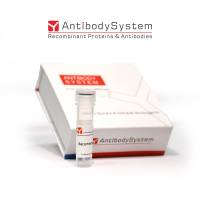DNase I and Hydroxyl Radical Characterization of Chromatin Complexes
互联网
- Abstract
- Table of Contents
- Materials
- Figures
- Literature Cited
Abstract
The native chromatin complex within most eukaryotic nuclei is very difficult to study by biochemical means, so researchers have developed methods for studying smaller portions of the complex. This unit details the use of DNase I and hydroxyl radicals to characterize histone?DNA interactions within such portions of the complex. DNase I digestion can be used to determine what regions of a DNA segment are intimately associated with the core histone proteins and what regions are more like naked DNA (i.e., linker DNA within the nucleosomal repeat). The finer deatils of histone?DNA interactions and DNA structure within these complexes is best characterized by digestion with the hydroxyl radical. Both reagents may be used to assess the degree and homogeneity of rotational and translational positioning within isolated chromatin complexes.
Table of Contents
- Basic Protocol 1: Analysis of Chromatin Complexes by DNase I Cleavage
- Alternate Protocol 1: Footprinting with Hydroxyl Radicals
- Reagents and Solutions
- Commentary
- Literature Cited
- Figures
Materials
Basic Protocol 1: Analysis of Chromatin Complexes by DNase I Cleavage
Materials
Alternate Protocol 1: Footprinting with Hydroxyl Radicals
|
Figures
-

Figure 21.4.1 Flow chart for DNase I and hydroxyl radical cleavage analysis of chromatin complexes. View Image
Videos
Literature Cited
| Literature Cited | |
| Hansen, J.C. 1997. The core histone amino termini: Combinatorial interaction domains that link chromatin structure with function. Chemtracts 10:737‐750. | |
| Hayes, J.J., Tullius, T.D., and Wolffe, A.P. 1990. The structure of DNA in a nucleosome. Proc. Natl. Acad. Sci. U.S.A. 87:7405‐7409. | |
| Hayes, J.J., Bashkin, J., Tullius, T.D., and Wolffe, A.P. 1991. The histone core exerts a dominant constraint on the DNA in a nucleosome. Biochemistry 30:8434‐8440. | |
| Luger, K., Mader, A.W., Richmond, R.K., Sargent, D.F., and Richmond, T.J. 1997. Crystal structure of the nucleosome core particle at 2.8 Å resolution. Nature 389:251‐260. | |
| Schwartz, P.M., Felthauser, A., Fletcher, T.M., and Hansen, J.C. 1996. Reversible oligonucleosome self‐association: Dependence on divalent cations and core histone tail domains. Biochemistry 35:4009‐4015. | |
| Suck, D. and Oefner, C. 1986. Structure of DNase I at 2.0 Å resolution suggests a mechanism for binding to and cutting DNA. Nature 321:620‐625. | |
| Tullius, T.D. 1987. Chemical snapshots of DNA: Using the hydroxyl radical to study the structure of DNA and DNA‐protein complexes. Trends Biochem. Sci. 12:297‐300. | |
| Tullius, T.D. and Dombroski, B.A. 1985. Iron(II) EDTA used to measure the helical twist along any DNA molecule. Science 230:679‐681. | |
| Tullius, T.D., Dombroski, B.A., Churchill, M.E., and Kam, L. 1987. Hydroxyl radical footprinting: A high‐resolution method for mapping protein‐DNA contacts. Methods Enzymol. 155:537‐558. | |
| van Holde, K.E. 1989. Chromatin. Springer‐Verlag, New York. | |
| Wolffe, A.P. 1995. Chromatin: Structure and Function. Academic Press, London. | |
| Wolffe, A.P. and Hayes, J.J. 1993. Transcription factor interactions with model nucleosome templates. Mol. Genet. 2:314‐330. |









